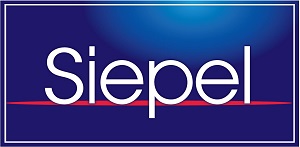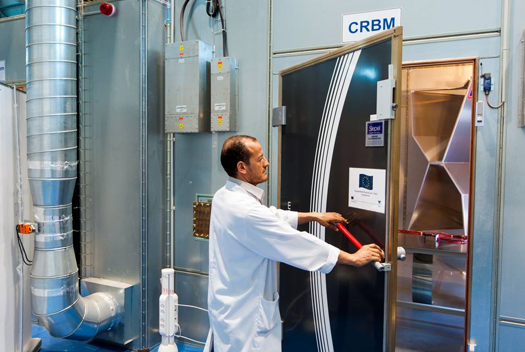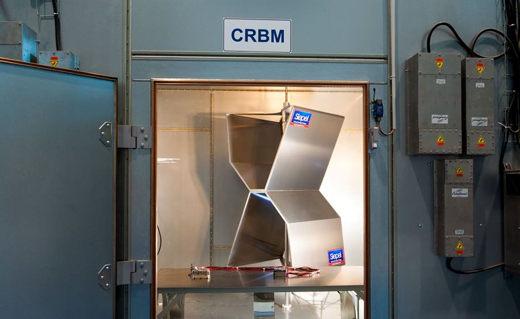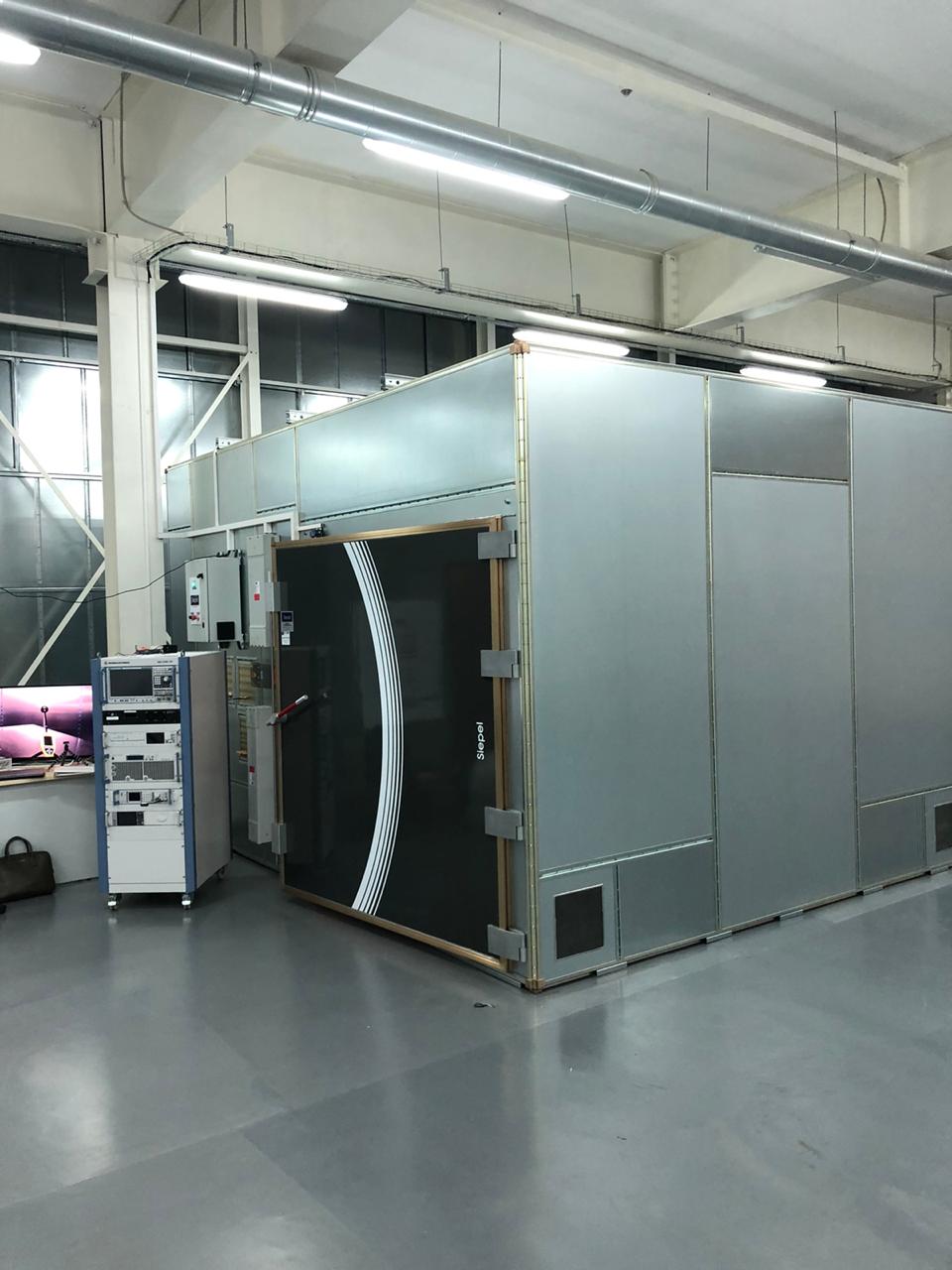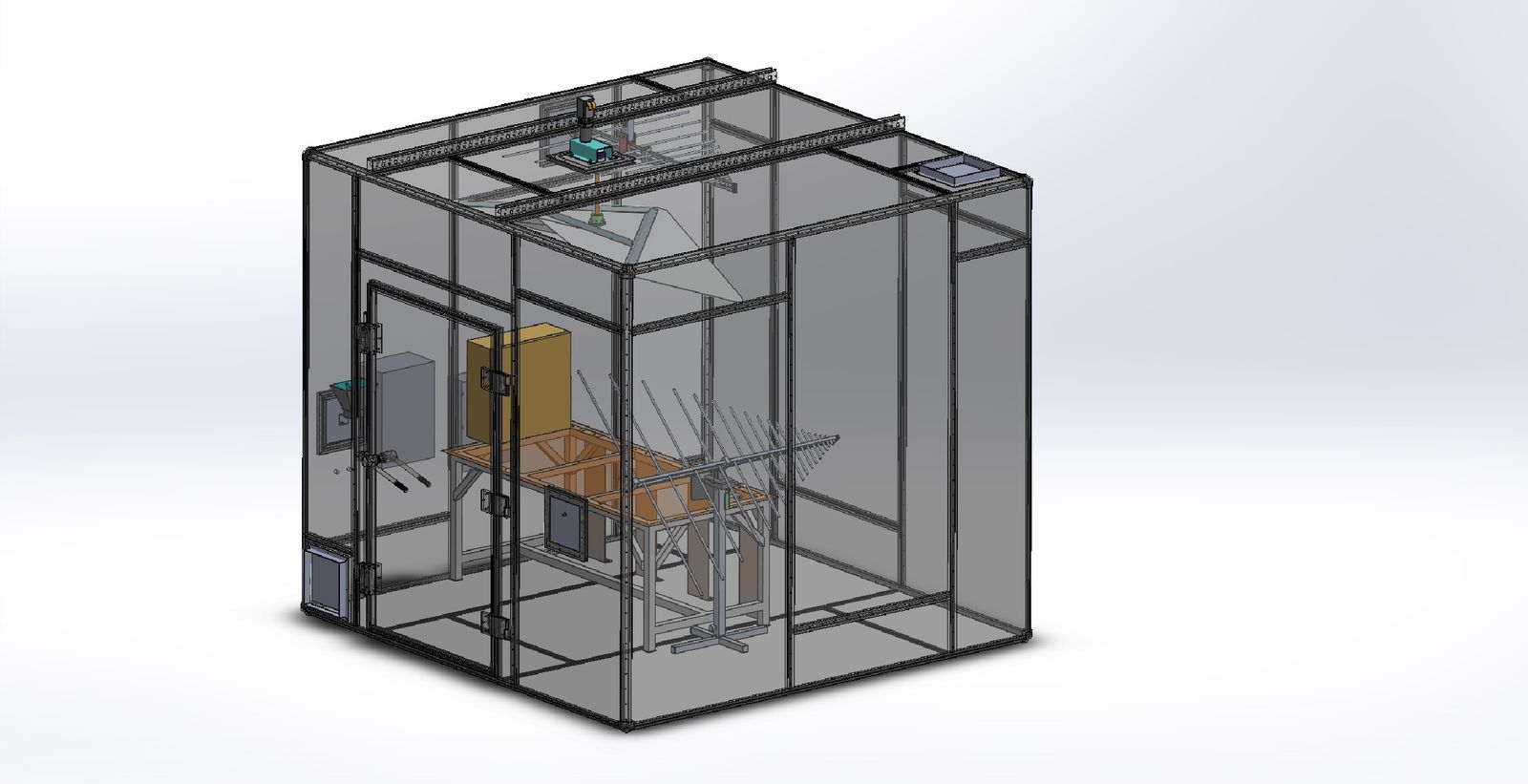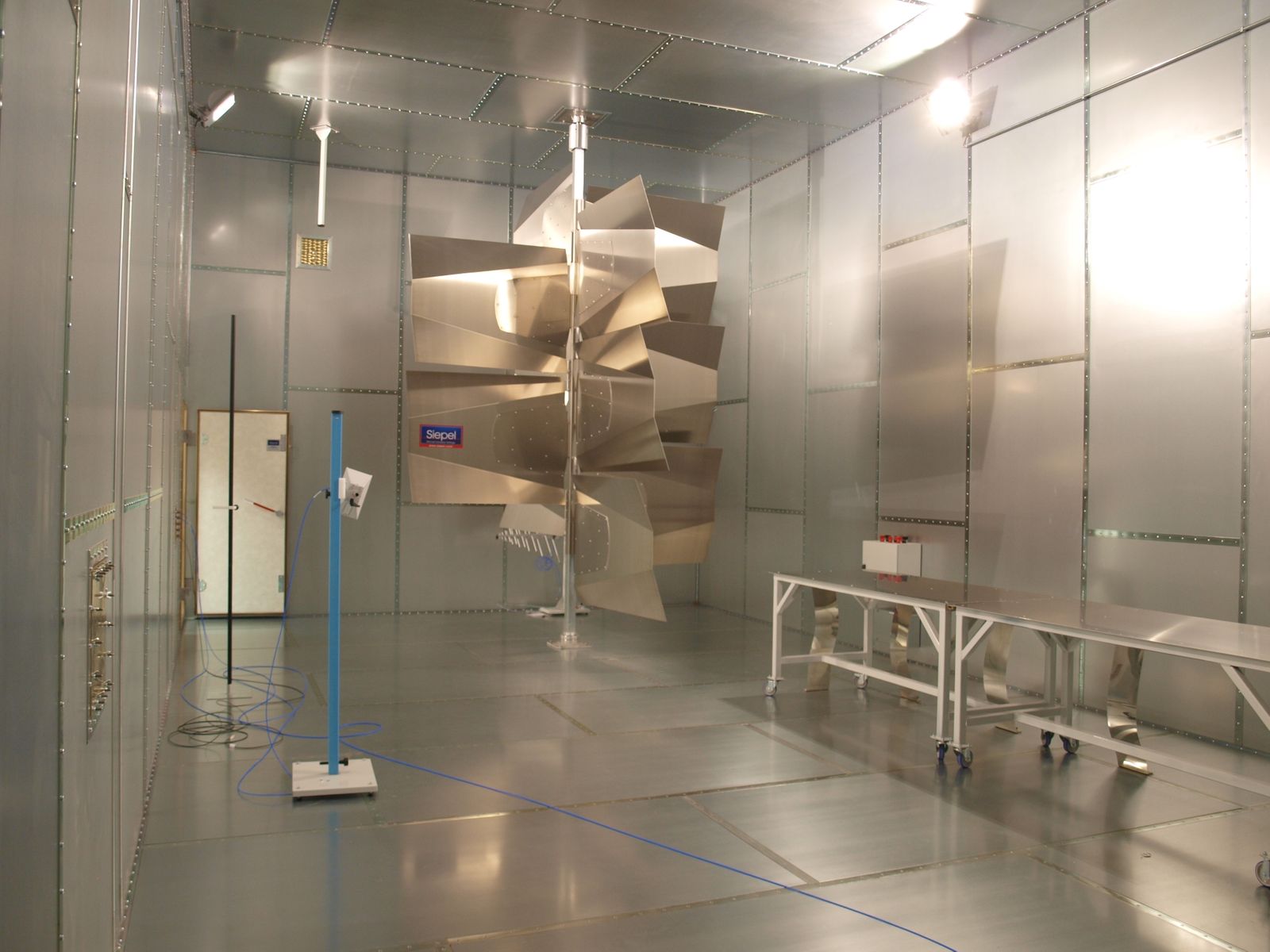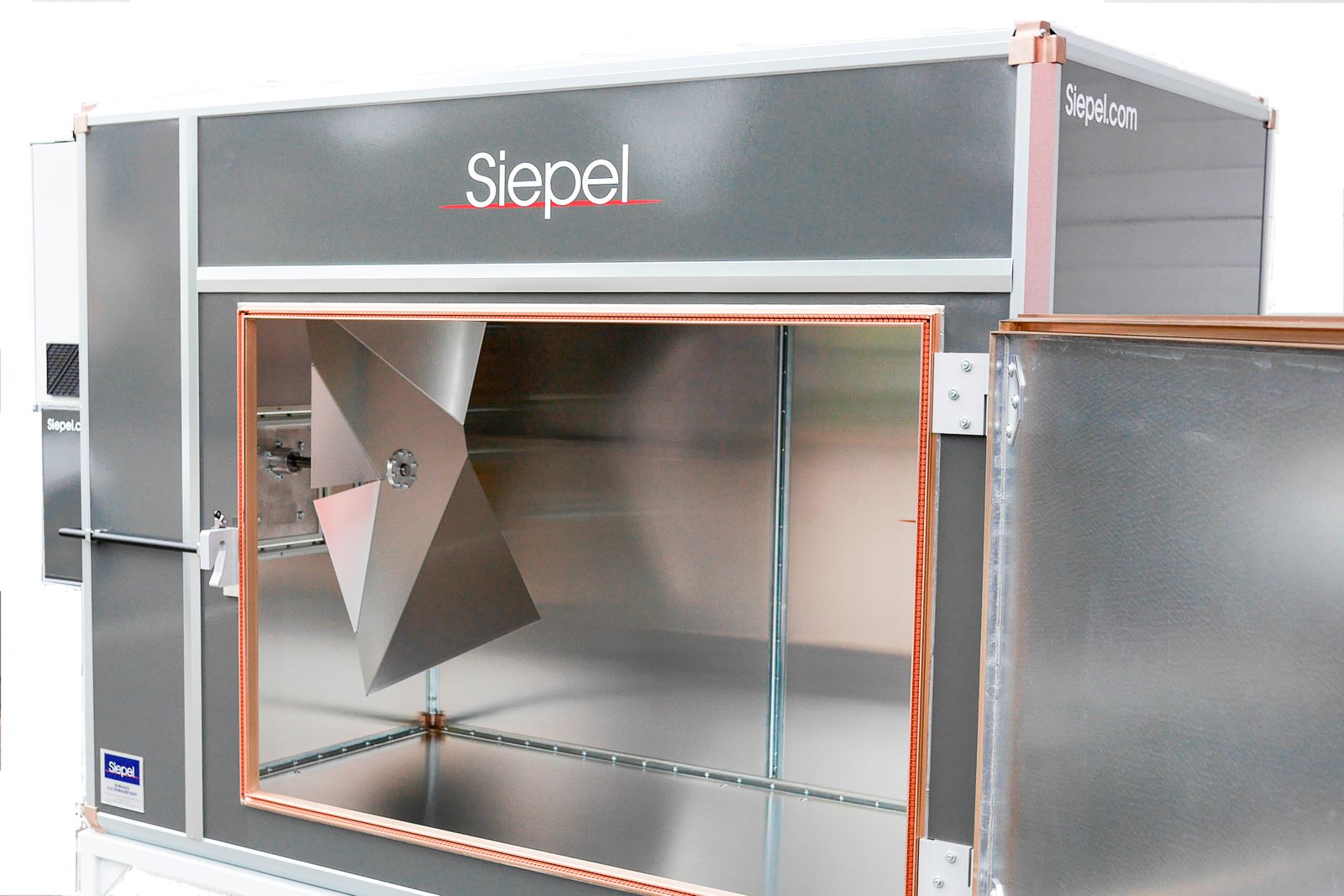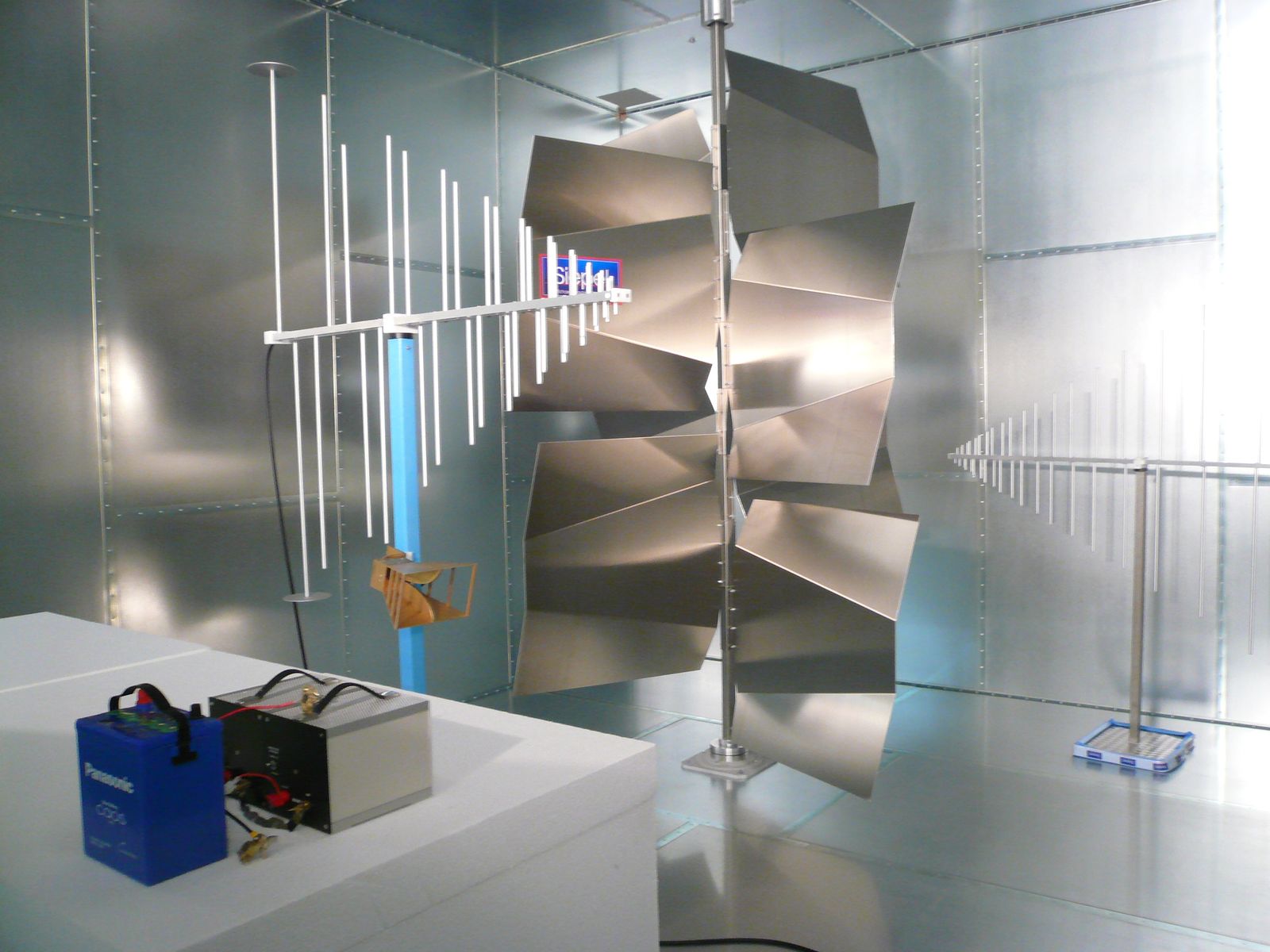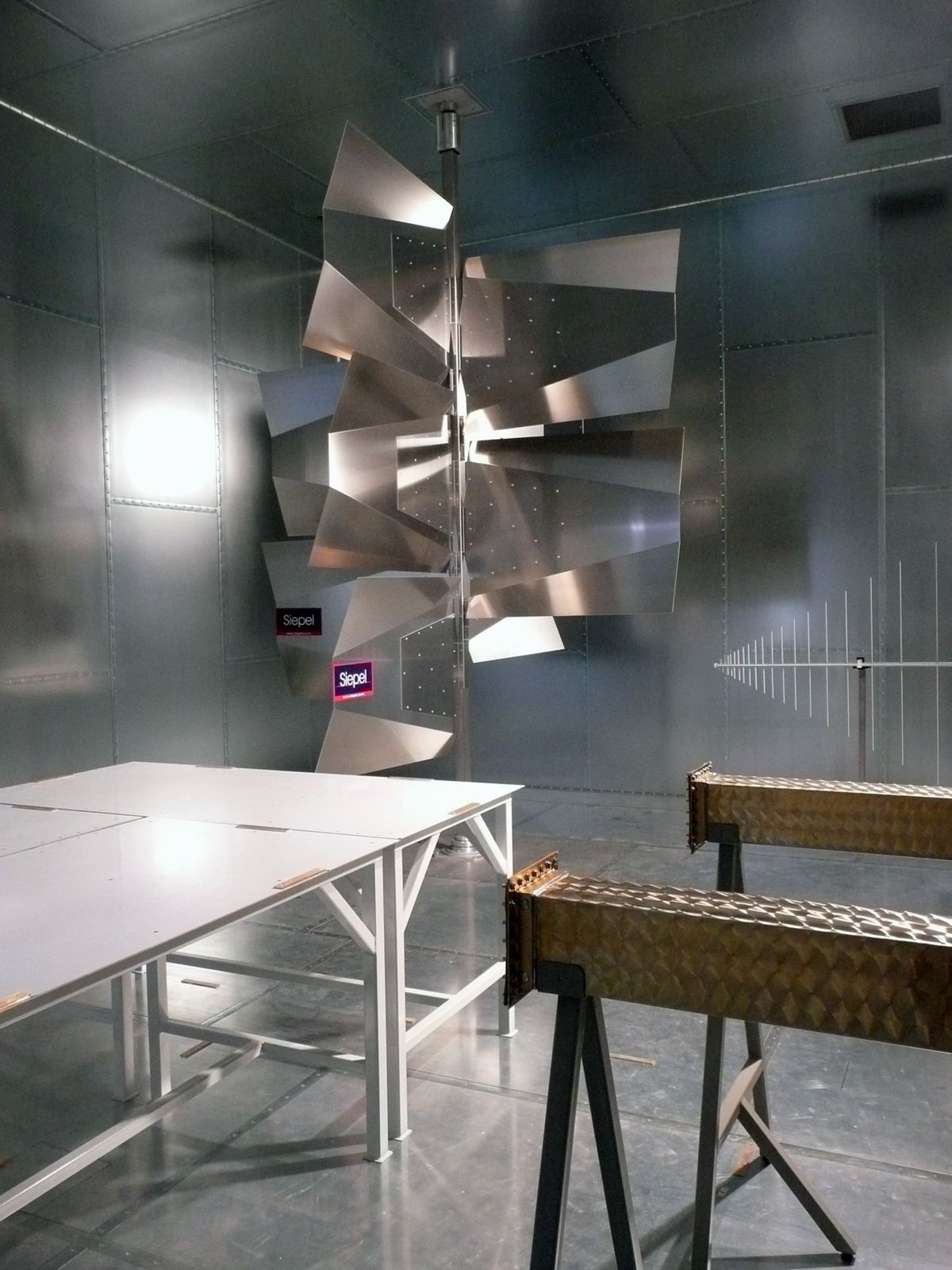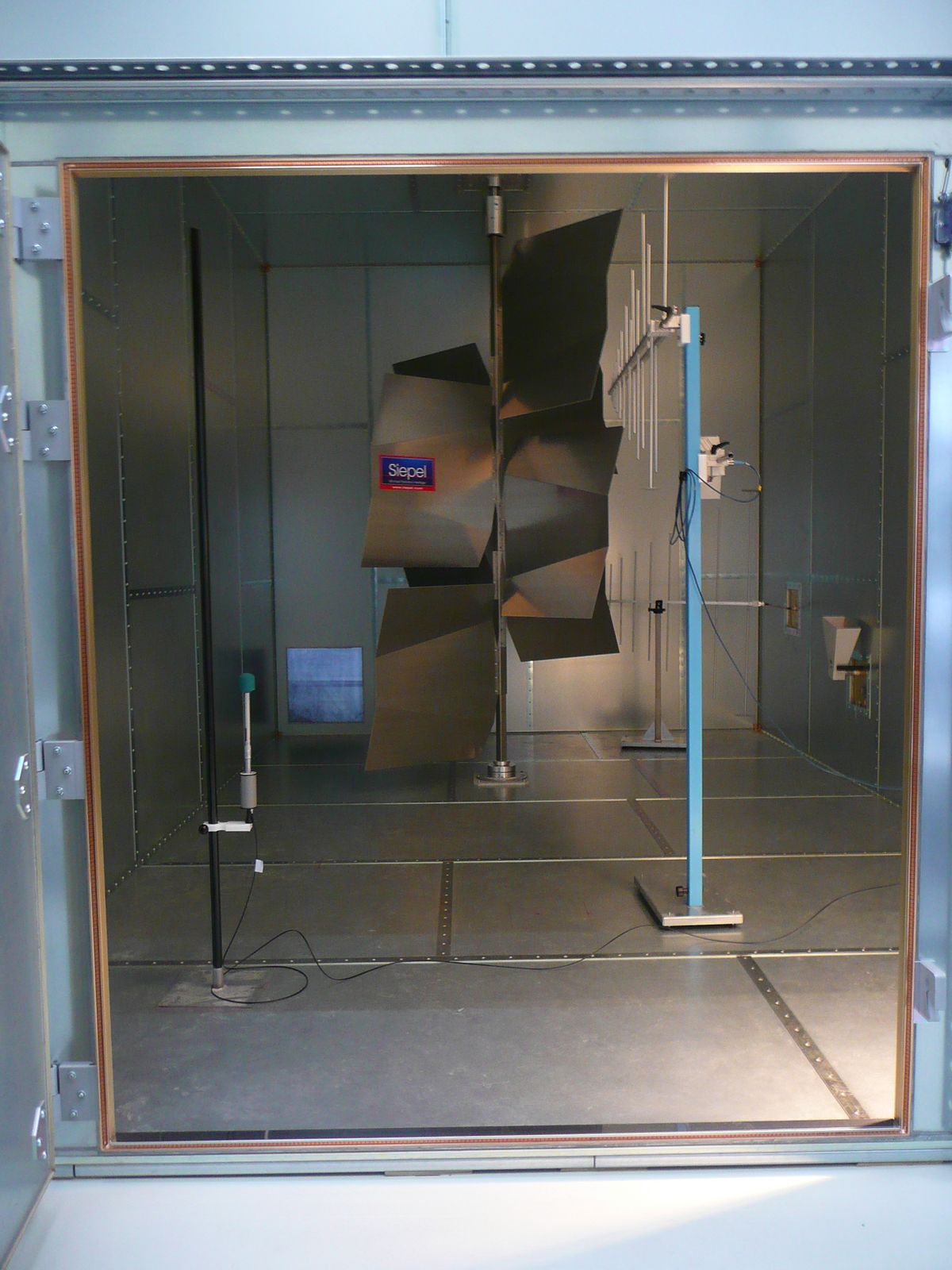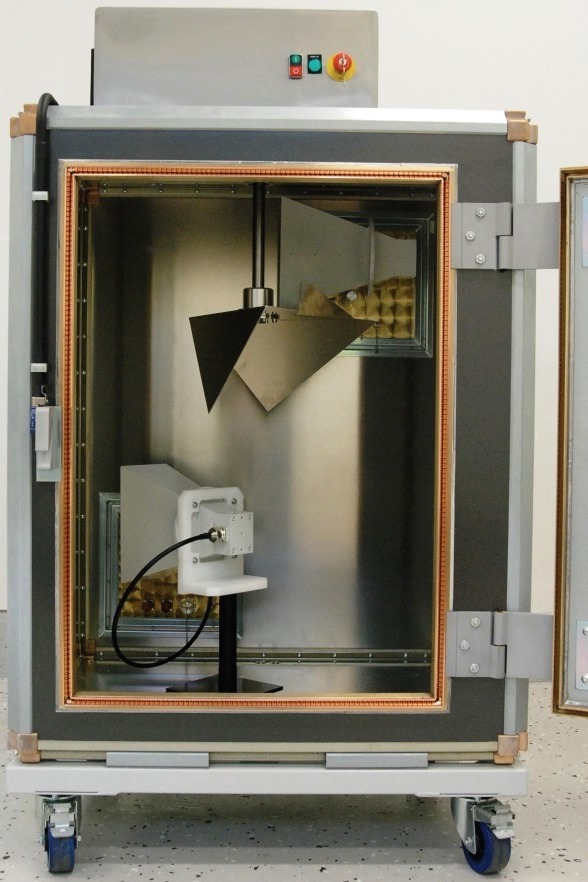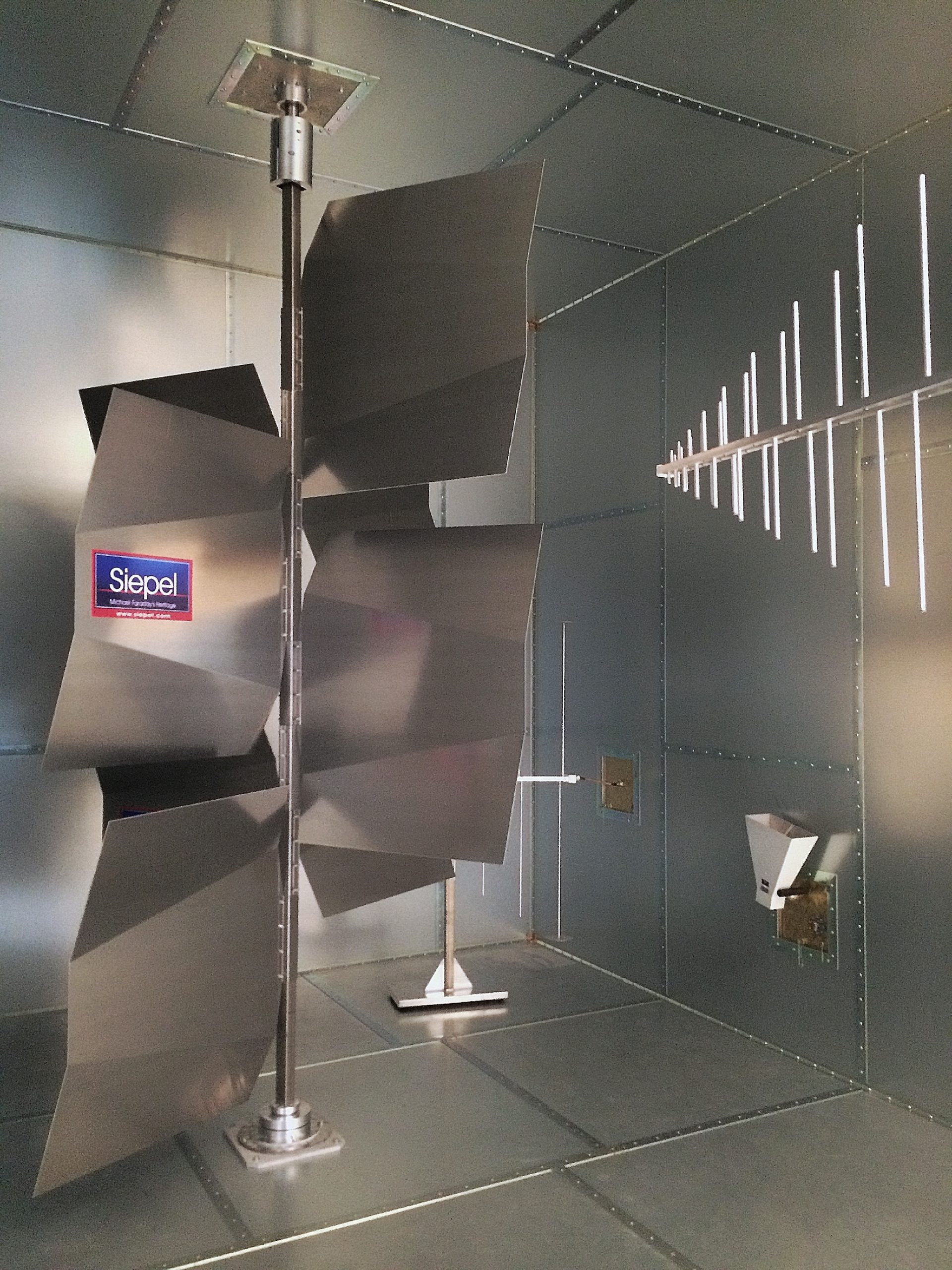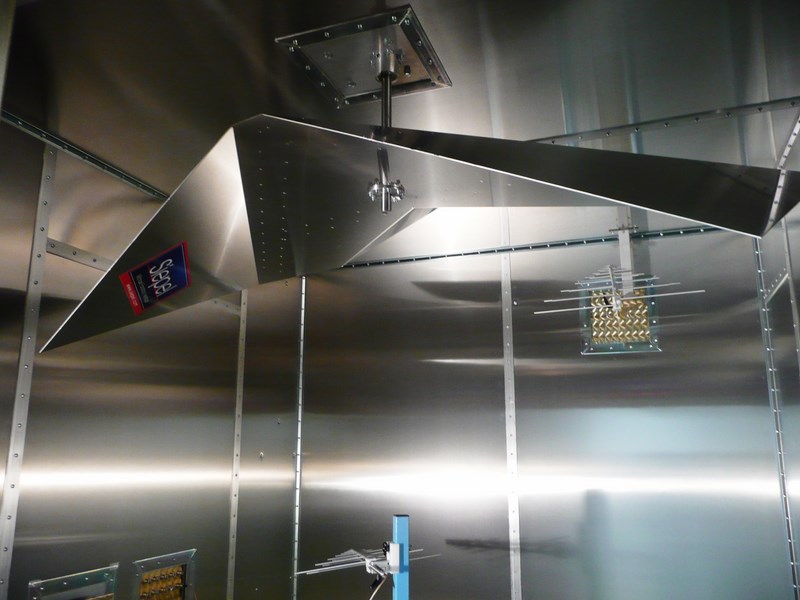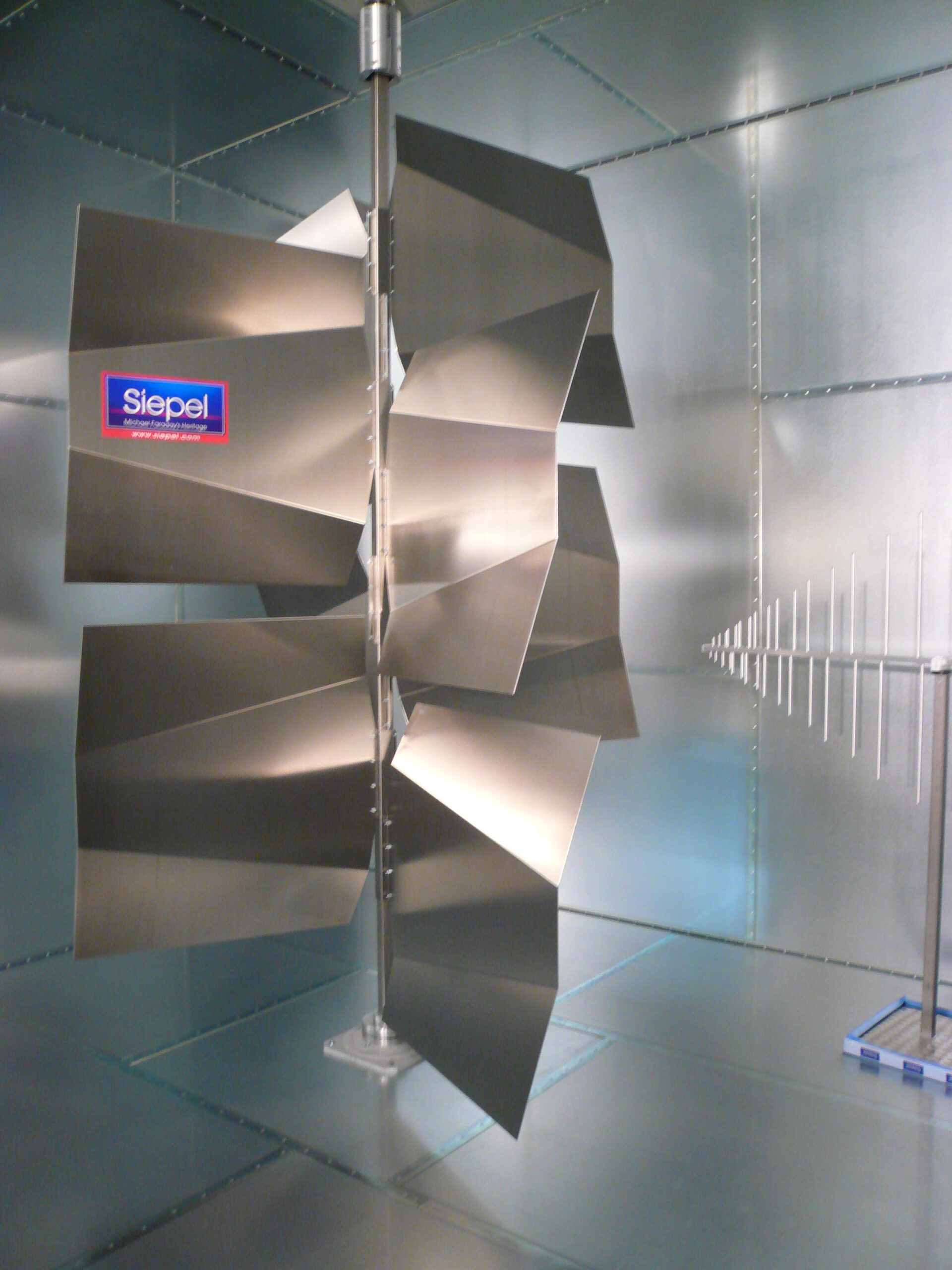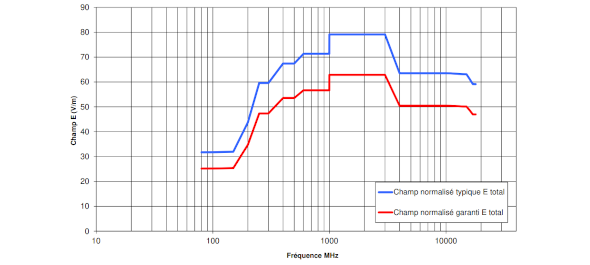
EMC testing models
Reverb chamber: how to choose ?
The choice of a reverberation chamber is made according to three main deciding criterion:
- The dimensions of the equipment under test (EUT),
- The operating frequency range,
- The available power level and the desired field strength.
Large reverb chambers are designed for low-frequency measurements and offer attractive minimum normalized fields (field strength obtained with 1 Watt).
Small reverberation chambers can be used at high frequencies and offer high normalized field levels.
Eole: Siepel reverberation chambers models
Siepel has defined models characterized by the Low Usable Frequency (LUF):
| EOLE 80 | EOLE 100 | EOLE 200 | EOLE 400 | EOLE 1000 | |
|---|---|---|---|---|---|
| Lowest Usable Frequency (LUF) according to MIL STD 461, IEC/EN 61000-4-21 DO 160, ISO 11452-11 |
≥80 MHz ≥ 80 MHz |
≥100 MHz ≥ 100 MHz |
200 MHz ≥ 100 MHz with option |
≥ 400 MHz ≥ 100 MHz with option |
≥ 1000 MHz ≥ 1000 MHz |
| Working volume Length x width x height |
4.10 x 3.30 x 2.00 m | 3 x 2.44 x 2.11 m | 2.72 x 1.69 x 2.11 m | 2.36 x 2 x 1.16 m | 0.72 x 0.56 x 0.40 m |
| External dimensions (include stiffeners) | 9.57 x 6.80 x 5.40 m | 7.65 x 5.17 x 4.52 m | 4.88 x 3.76 x 3.12 m | 3.15 x 3.15 x 2.90 m | 1.02 x 0.86 x 1.28 m |
| Internal dimensions | 9.30 x 6.10 x 4.96 m | 7.44 x 4.96 x 4.11 m | 4.84 x 3.72 x 2.86 m | 3.11 x 3.11 x 2.86 m | 0.98 x 0.82 x 1.24 m |
| Internal walls | Steel | Steel | Steel or aluminium | Aluminium | Aluminium |
EOLE 80
Applications: Defence / Automotive / Aeronautics
Tests: according to RTCA DO 160 and MIL STD 461
Between 80 MHz and 40 GHz
Guaranteed normalized E fields prediction for 1W (coaxial or waveguide loss not included):

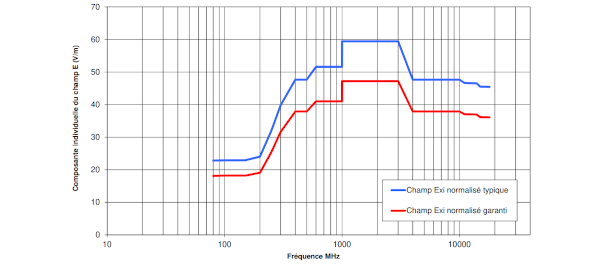
According to MIL STD 461 and EN61000-4-21
EOLE 100
Applications: Defence / Automotive / Aeronautics
Tests: according to RTCA DO 160 and MIL STD 461
Between 100 MHz and 40 GHz
Guaranteed normalized E fields prediction for 1W (coaxial or waveguide loss not included):

According to DO160
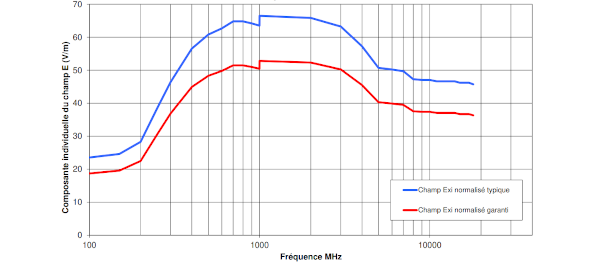
According to MIL STD 461 and EN61000-4-21
EOLE 200
Applications: Defence / Automotive / Aeronautics
Tests: according to RTCA DO 160 and MIL STD 461
Between (100) 200 MHz and 40 GHz
Guaranteed normalized E fields prediction for 1W (coaxial or waveguide loss not included):
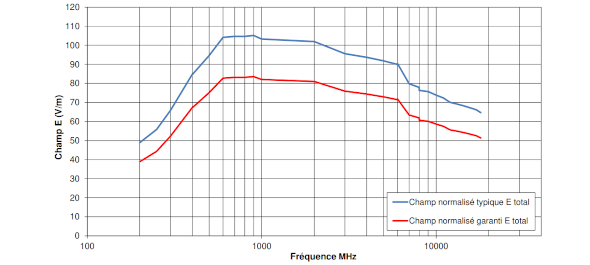
According to DO160
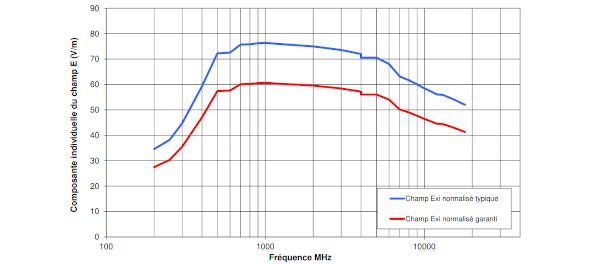
According to MIL STD 461 and EN61000-4-21
EOLE 400
Applications: Defence / Automotive / Aeronautics
Tests: according to RTCA DO 160 and MIL STD 461
Between (100) 400 MHz and 40 GHz
Guaranteed normalized E fields prediction for 1W (coaxial or waveguide loss not included):
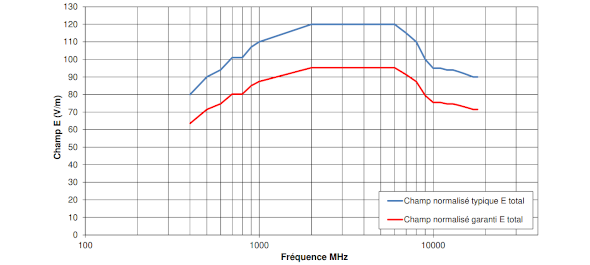
According to DO160
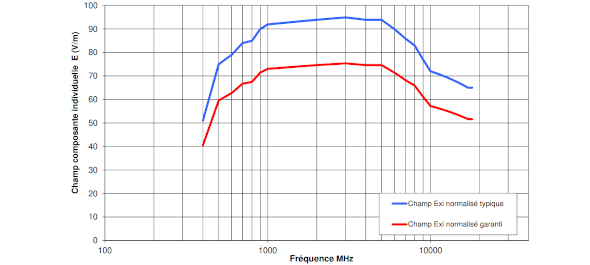
According to MIL STD 461 and EN61000-4-21
EOLE 1000
Applications: Defence / Aeronautics
EMC radiated immunity test according to RTCA DO160 and MIL STD 461
Advantages:
- Considerably reduced laboratory space
- Lower acquisition costs of amplifiers and optimised testing facilities
Guaranteed normalized E-field prediction for 1W (coaxial or waveguide loss not included):
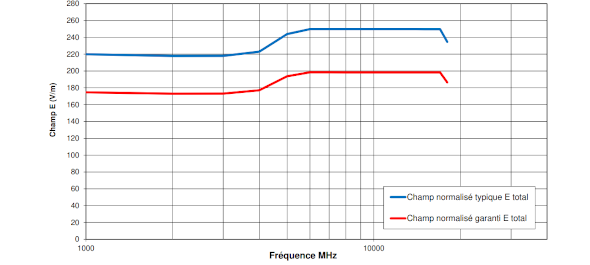
According to DO160
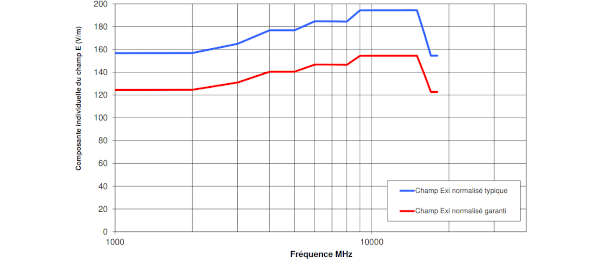
According to MIL STD 461 and EN61000-4-21
Customisable RVC
These models have been defined to meet the most common requirements of the market. Being a designer and manufacturer, we are able to adapt the standard dimensions to meet your specific needs or the constraints of the location. Upon request and specification, a customized solution or a combination of several RVC can also be offered.
Additional services for reverberation chambers
Option to reduce the low frequency: LUF extender
We have developed a solution to lower the working frequency of the Eole 200 & Eole 400 to 100 MHz without increasing the size of the CRBM; only the working volume is slightly reduced; ask us for more information!
Measurement system including RVC and instrumentation
Is your project requiring a turnkey system? We can advise you or define the whole test facility and determine the required output power for the amplifiers taking into account the losses of coaxial cables, harmonic filters, etc.
Reverberation chamber measurements
Please refer to the page dedicated to measurement services for more information
Our commitment to RVC performance
Regardless of the proposed model, we already indicate in our quotations the normalized E-field that will be obtained with 1 watt of injected power. After installation, verification measurements will confirm these expected results.
